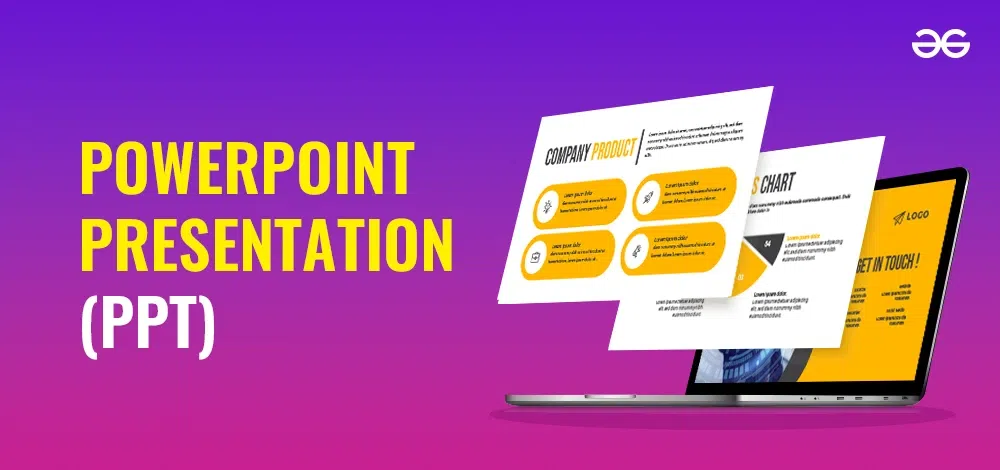Stunning Typography#1
/in Writers24x7 /by developerTable of Contents
ToggleStunning Typography for Powerful Presentations: Captivate Your Audience with Text
Typography is more than just arranging words on a slide—it’s an art form that can transform your presentations from dull and uninspiring to captivating and memorable. The way you use fonts, sizes, colors, and spacing can dramatically impact how your message is received. Stunning typography not only makes your presentations visually appealing but also guides your audience’s attention, reinforces your message, and leaves a lasting impression. In this blog post, we’ll explore how to leverage typography to create powerful presentations that captivate and inspire.
Why Typography Matters in Presentations
Typography influences how your audience perceives and processes information. Here’s why it’s so important:
- Boosts Readability: Well-chosen typography ensures that your content is easy to read and digest, even at a glance.
- Creates Visual Hierarchy: Typography can guide your audience through your content in a structured manner, emphasizing key points and supporting details.
- Reinforces Brand Identity: Consistent use of fonts and styles aligns your presentation with your brand, boosting credibility and recognition.
- Elicits Emotional Responses: Different fonts evoke different emotions, from professionalism and trustworthiness to creativity and excitement.
How to Use Stunning Typography for Powerful Presentations
1. Choose the Right Fonts
Your font choice sets the tone for your entire presentation. Select fonts that align with your message and audience:
- Serif Fonts (e.g., Times New Roman, Georgia): Convey professionalism, tradition, and reliability. Ideal for formal or corporate presentations.
- Sans-Serif Fonts (e.g., Arial, Helvetica): Modern, clean, and versatile, making them perfect for most presentations.
- Decorative or Script Fonts: Use sparingly for emphasis or in creative contexts, such as event invitations or artistic slides.
Tip: Limit yourself to two or three fonts per presentation for a clean, cohesive look.
2. Establish a Visual Hierarchy
Visual hierarchy is key to directing your audience’s attention. Use different font sizes, weights (bold, regular, light), and colors to distinguish between headings, subheadings, and body text. The most important elements should stand out immediately.
Example:
- Main Headings: Use a large, bold font to grab attention.
- Subheadings: Slightly smaller and lighter, but still prominent.
- Body Text: Keep it simple and legible.
3. Focus on Readability and Accessibility
No matter how stylish your typography is, if it’s hard to read, you’ll lose your audience. Follow these readability guidelines:
- Font Size: Ensure your text is large enough for all viewers, especially in large rooms or virtual presentations. A minimum size of 24pt for body text is a good rule of thumb.
- Line Spacing: Use adequate spacing between lines to prevent text from appearing cramped.
- Contrast: High contrast between text and background (e.g., dark text on a light background) improves readability.
4. Be Mindful of Text Alignment
Aligning text consistently contributes to a polished, professional appearance. Left-align or center-align text, but avoid justifying text as it can create uneven spacing.
5. Use Color to Make an Impact
Colors evoke emotions and can draw attention to important text. Use your brand colors strategically to reinforce your brand identity and create visual interest. Avoid overusing colors—stick to a consistent palette for a clean, harmonious look.
Tip: Use contrasting colors for headings and body text to ensure readability.
6. Emphasize with Typography Effects
Subtle text effects such as bolding, italics, underlining, and shadowing can add emphasis. However, use these sparingly to avoid overwhelming your audience.
7. Consistency is Key
Maintain consistent typography throughout your presentation. This includes font sizes, styles, and colors for headings, subheadings, and body text. Consistency creates a sense of professionalism and cohesion.
Common Typography Mistakes to Avoid
- Overloading with Too Many Fonts: Too many fonts create visual chaos. Stick to a few complementary fonts for a clean and cohesive look.
- Inconsistent Formatting: Random font sizes, colors, and styles can confuse your audience. Ensure uniformity throughout.
- Poor Color Contrast: Low contrast makes text difficult to read. Always ensure there is enough contrast between your text and background.
- Excessive Text: Don’t overwhelm slides with too much text. Keep it concise and use bullet points, visuals, or other elements to communicate your message.
Examples of Effective Typography in Presentations
- Corporate Presentation: Use a clean sans-serif font for body text with bold headings, consistent spacing, and a limited color palette to convey professionalism and authority.
- Creative Pitch: Incorporate decorative fonts sparingly for headings or key points, paired with a modern sans-serif for body text. Use contrasting colors for a visually striking effect.
- Educational Slide Deck: Prioritize readability with a legible font size, clear headings, and enough line spacing. Highlight key concepts using bold or italicized text.
Enhancing Your Presentations with Stunning Typography
Typography is an art, and when used thoughtfully, it can transform your presentations. Here’s how you can get started:
- Experiment with Fonts: Find combinations that enhance your message without detracting from clarity.
- Seek Inspiration: Explore well-designed presentations or platforms like Canva, where you can find templates with effective typography.
- Practice and Iterate: Gather feedback from colleagues or peers, refine your typography choices, and watch how your presentation improves.
Taking Typography to the Next Level
Once you’ve mastered the basics of stunning typography for powerful presentations, it’s time to elevate your skills even further. Here are some advanced techniques and strategies to make your presentations truly unforgettable:
1. Custom Font Pairing
Experiment with unique font pairings to create a distinctive style that matches your presentation’s tone and purpose. For example, combining a modern sans-serif for headings with a classic serif for body text can create an appealing contrast that draws attention.
2. Responsive Typography for Virtual Presentations
In virtual settings, the audience may view your presentation on various devices. Make sure your typography remains legible across different screen sizes by using scalable fonts and testing for responsiveness. This ensures a consistent experience for all viewers.
3. Variable Fonts for Flexibility
Variable fonts are gaining popularity due to their ability to offer multiple weights, widths, and styles within a single font file. This flexibility allows you to fine-tune your typography without increasing file sizes, enhancing both design and performance.
4. Animated Text Effects
Adding subtle text animations, such as fade-ins, slide-ins, or typewriter effects, can make your content come alive. Just be mindful to keep animations smooth and professional to avoid distracting your audience.
5. Typography for Emphasizing Calls to Action (CTAs)
For presentations with specific calls to action—whether it’s closing a sale, encouraging donations, or driving engagement—use typography strategically. Bold, high-contrast text, engaging wording, and clear spacing can make CTAs more compelling.
6. The Power of White Space
Don’t be afraid to use white space around your text. It gives your typography room to breathe, improves readability, and focuses attention on key messages.
7. Font Licensing and Accessibility
When choosing fonts, consider licensing if you’re presenting in a professional setting or distributing slides. Additionally, make sure your typography choices adhere to accessibility standards, such as readable fonts for visually impaired audiences.
Inspirational Examples of Stunning Typography in Presentations
- Minimalist Presentations: Fewer words, larger fonts, and thoughtful spacing create a clean and impactful design. Minimalist typography forces clarity and emphasizes key takeaways.
- Branded Presentations: Using brand fonts, colors, and styles throughout ensures a cohesive message and strengthens brand identity.
- Storytelling Presentations: Combine different font styles and sizes to create a narrative flow that guides your audience through your story.
Incorporating Typography into Different Presentation Types
1. Sales Presentations
Use bold, eye-catching typography to highlight sales data, client testimonials, and key benefits. Ensure your font choices convey professionalism, trust, and excitement.
2. Educational Lectures
Prioritize readability and clarity. Use consistent headings and subheadings to structure content and highlight key points with bold or italic text.
3. Motivational Talks
Typography can evoke emotion, inspire action, and convey passion. Experiment with expressive fonts and color schemes to enhance your message.
As you continue to hone your skills with stunning typography for presentations, remember that each element you choose plays a role in how your message is received. Typography is not just about fonts; it’s about how you communicate, how you create emphasis, and how you evoke emotions. When used with purpose and creativity, it has the power to transform ordinary slides into powerful experiences that leave a lasting impact on your audience.
Takeaways for Mastering Typography
- Simplicity and Clarity: The most effective typography is clear, legible, and aligned with your message. Don’t overcomplicate it—focus on getting your point across in a way that’s easy to understand.
- Experiment Within Boundaries: Play with fonts, sizes, colors, and spacing to find what works best for your presentation, but keep it consistent and cohesive throughout.
- Storytelling Through Typography: Let your typography guide your audience’s journey through your presentation. Use it to emphasize important messages, create dramatic pauses, and lead them from one key idea to the next.
- Invest in Quality Fonts: High-quality fonts make a difference. Consider purchasing professional fonts or exploring platforms like Google Fonts for free but polished options.
- Feedback and Practice: Typography is a creative skill that evolves over time. Keep practicing, seek feedback, and be open to trying new approaches.
Resources for Further Learning
- Typography Websites: Explore sites like Google Fonts, Adobe Fonts, or Typewolf for font inspiration and resources.
- Online Courses: Platforms like Skillshare and Udemy offer courses on typography design, graphic design, and presentation skills.
- Typography Blogs and Communities: Engage with typography-focused blogs and communities to learn from others, share ideas, and gain insights into emerging trends.
The Journey to Typography Mastery: Keep Innovating
Mastering stunning typography for powerful presentations is not a one-time achievement; it’s an ongoing journey. As design trends evolve and audience expectations shift, staying on top of the latest in typography will help you maintain your edge. Keep experimenting, learning, and refining your approach to make each presentation better than the last.
What’s Next?
Here are some actionable steps you can take to continue mastering the art of typography in presentations:
- Stay Inspired by Great Examples
- Watch TED Talks and observe how speakers use visual slides and typography.
- Study presentations from well-known companies like Apple, which are known for clean, effective typography.
- Attend Workshops and Webinars
- Look for design and presentation workshops online or in your local community to learn directly from experts.
- Join webinars focused on presentation design, typography, and storytelling techniques.
- Keep Up with Trends
- Follow typography-focused blogs like Smashing Magazine, Typewolf, and Typography.com for design tips and emerging trends.
- Experiment with popular fonts, learn about new font releases, and try incorporating them into your presentations.
- Create a Style Guide for Your Brand
- If you regularly give presentations for work or personal branding, consider creating a typography style guide. This ensures consistency across all of your presentations, helping to build recognition and professionalism.
Achieving mastery in stunning typography for powerful presentations is a continuous journey that rewards those who practice and refine their craft. Here are some additional strategies to keep pushing the boundaries of your presentation design:
1. Seek Out Constructive Feedback
Present your slides to colleagues, peers, or mentors and ask for their honest opinions. Are your fonts easy to read? Does the text align with the message and tone of your presentation? Constructive feedback helps you identify areas for improvement and refine your approach.
2. Experiment with New Styles and Techniques
Typography is an ever-evolving art form. Don’t be afraid to experiment with new font combinations, sizes, colors, and layouts. Just make sure you maintain readability and consistency.
3. Create Engaging Presentation Templates
If you frequently give presentations, consider creating a few templates that use stunning typography to its fullest potential. This saves time and ensures consistency across your presentations while reinforcing your brand identity.
4. Master the Art of Storytelling Through Typography
Your text should tell a story, guiding your audience from point to point. Use typography to highlight transitions, create dramatic emphasis, and deliver key messages in a memorable way. Fonts, colors, and spacing can be used to evoke different emotions, helping to enhance your storytelling.
5. Integrate Typography with Other Visual Elements
Typography should complement, not compete with, other visual elements like images, charts, and videos. Ensure that your fonts work harmoniously with the overall design of your slides to create a unified and impactful visual experience.
Common Typography Pitfalls to Watch Out For
1. Over-Stylization
While it can be tempting to use decorative fonts or complex layouts, over-stylization often reduces readability. Keep it simple, clean, and focused.
2. Ignoring Accessibility
Make sure your typography choices are inclusive. Use high-contrast text for easy reading, and consider how your text will be perceived by people with visual impairments. Accessibility should always be a priority.
3. Neglecting Mobile-Friendly Design
If your presentations are likely to be viewed on mobile devices, ensure that your typography remains legible. Responsive typography adapts to different screen sizes without losing its impact.
Real-Life Success Stories: The Power of Typography
1. Corporate Branding Presentations
A global corporation revamped its brand identity through typography by creating visually stunning presentations that mirrored its brand’s tone and values. This consistency and attention to detail earned widespread recognition and improved brand trust.
2. Educational Workshops
A teacher redesigned their lecture slides with readable, engaging typography, resulting in increased student engagement and comprehension. The strategic use of bold headings, key term highlights, and consistent body text made learning more enjoyable and impactful.
3. Startup Pitches
Startups often face the challenge of standing out. By using powerful typography, a young company crafted a pitch deck that conveyed its innovative vision clearly and professionally, leading to successful investment rounds.
Staying Ahead: Embracing the Future of Typography
As technology advances, so too will the tools and trends in typography for presentations. Stay curious and keep experimenting with new tools, fonts, and techniques. Emerging technologies, such as AI-driven design assistants and interactive typography tools, offer exciting new ways to create impactful presentations.
Stay Inspired and Continue Learning
Typography is a dynamic field that evolves with trends, technology, and changing audience expectations. To stay ahead and continue creating stunning typography for powerful presentations, make it a habit to seek inspiration, learn from experts, and practice your craft. Here are a few final strategies to keep your skills sharp and your presentations impactful:
1. Follow Design Influencers and Typography Experts
Stay connected with typography influencers, graphic designers, and presentation experts on social media platforms. They often share tips, tutorials, and design inspiration that can help you elevate your presentations.
2. Engage in Design Communities
Join online design communities like Behance, Dribbble, or Reddit’s design subforums. Share your work, seek feedback, and learn from a diverse pool of designers with different perspectives and experiences.
3. Take Inspiration from Other Mediums
Typography is everywhere—from advertisements and books to movie credits and websites. Analyze the typography choices you encounter in your daily life, and consider how you can incorporate these elements into your own presentations.
4. Practice, Revise, and Iterate
With every presentation, focus on improving your typography choices. Test different font pairings, adjust spacing, refine your color palette, and seek feedback. The more you practice, the better your sense of design and typography will become.
5. Use Typography to Reinforce Your Message
Remember that typography is more than just aesthetics—it’s a tool for communication. Every font, size, color, and arrangement choice should work toward delivering your message more effectively. Typography has the power to emphasize, inspire, and evoke emotion, so use it thoughtfully to strengthen your narrative.
The Future of Typography in Presentations: Stunning Typography
As digital tools and creative possibilities continue to expand, so too will the role of typography in creating engaging, unforgettable presentations. Whether through AI-driven design enhancements, immersive 3D text, or interactive typography, the future holds endless possibilities for making your presentations stand out.
Staying current with typography trends ensures your presentations are modern, visually appealing, and aligned with audience expectations. While classic typography principles such as legibility, consistency, and contrast remain essential, evolving trends can add an innovative edge to your work. Here are some trends worth exploring:
1. Dynamic and Variable Fonts: Stunning Typography
Variable fonts offer flexibility in weight, width, and slant within a single font file, allowing for dynamic text variations. This adaptability is perfect for creating unique visual hierarchies without overloading your slide designs.
2. Minimalist Typography Designs: Stunning Typography
Simplicity is powerful. Minimalist typography emphasizes clean lines, white space, and strategic font choices to make key messages stand out. This trend often pairs bold headings with smaller, easy-to-read body text.
3. Layered Text and Mixed Media: Stunning Typography
Experiment with layering text over images, videos, or colorful backgrounds for an eye-catching effect. Make sure text remains legible by using contrasting colors, shadows, or transparent overlays.
4. Expressive Typography: Stunning Typography
Sometimes, words themselves can become works of art. Expressive typography leverages unique font designs, color gradients, and creative layouts to evoke emotion and draw attention. Use it strategically to highlight important sections without overwhelming your audience.
5. Motion Typography: Stunning Typography
Subtle text animations, like sliding, fading, or morphing effects, can make your presentations more engaging. Motion typography works best when it aligns with the flow of your content, guiding your audience’s attention without becoming a distraction.
Maximizing the Effectiveness of Your Typography: Stunning Typography
To fully harness the power of typography, focus on these critical aspects of presentation design:
1. Keep Your Audience in Mind: Stunning Typography
Different audiences respond to different typography styles. Corporate presentations may require clean, professional fonts, while creative or educational presentations allow for more experimentation and playfulness. Tailor your typography to the context and needs of your audience.
2. Balance Visual Appeal with Clarity: Stunning Typography
While aesthetics matter, clarity is paramount. Ensure that your typography remains legible, even when experimenting with unique fonts or colors. Readability and accessibility should never be compromised.
3. Leverage Contrast to Your Advantage: Stunning Typography
High contrast between text and background ensures your message stands out. Dark text on a light background or vice versa is a timeless approach, but don’t shy away from experimenting with bold colors for impact, as long as it maintains readability.
4. Tell a Story Through Typography: Stunning Typography
Guide your audience through your content by using typography to create a narrative flow. Headlines can introduce key themes, subheadings can break down topics, and emphasis tools like bold or italic text can draw attention to specific points.
Tools and Resources for Stunning Typography
1. Design Tools: Stunning Typography
- Canva: Easy-to-use platform for creating stunning slides with customizable font options.
- Adobe Creative Cloud (Photoshop, Illustrator, InDesign): Professional tools for designing custom typography.
- Google Slides and Microsoft PowerPoint: Offer built-in tools for text customization and font selection.
2. Typography Resources: Stunning Typography
- Google Fonts: Access a library of free, web-safe fonts suitable for various design projects.
- Font Pair: Explore different font pairings to find combinations that work well together.
- Typekit by Adobe: Offers a broad selection of fonts for creative professionals.
Typography is a skill that improves with practice, experimentation, and an openness to new ideas. By consistently refining your approach, you ensure that your presentations remain engaging, relevant, and impactful. Whether you’re creating a sales pitch, delivering a workshop, or presenting in front of a large audience, stunning typography can be the key to capturing and holding attention.
1. Keep an Eye on Typography Trends: Stunning Typography
Stay current with emerging trends in typography, including new fonts, animation techniques, and responsive design innovations. Follow typography-focused blogs, attend webinars, and explore the latest tools to stay inspired.
2. Seek Inspiration Everywhere: Stunning Typography
Typography is all around us—on billboards, websites, packaging, and books. Take note of what stands out to you and why. Borrow ideas, adapt styles, and let everyday typography inspire your next presentation.
3. Invest in High-Quality Fonts: Stunning Typography
While free fonts are widely available, investing in professional-grade fonts can give your presentations a unique edge. High-quality fonts often come with additional weights, characters, and features that allow for greater customization and polish.
4. Solicit and Act on Feedback: Stunning Typography
Regularly seek feedback on your typography choices from colleagues, peers, or design experts. Honest critique will help you identify areas for improvement and refine your approach.
5. Experiment with New Techniques: Stunning Typography
Push your boundaries by experimenting with different text layouts, effects, and animations. Test how subtle motion, gradient overlays, or creative pairings can add flair to your typography while maintaining clarity and impact.
Advanced Typography Techniques to Explore
1. Typographic Hierarchies for Complex Data: Stunning Typography
If you’re presenting complex data or content-heavy slides, use typographic hierarchies to create clear structure. Headings, subheadings, bullet points, and emphasis tools (bold, italics) help guide your audience through the content logically.
2. Integrated Typography and Graphics: Stunning Typography
Combine text and graphics in creative ways, such as wrapping text around shapes, blending it with images, or using custom illustrations to enhance your message. This technique is visually appealing and can help convey complex ideas.
3. Color Psychology in Typography: Stunning Typography
Colors evoke different emotions. Use them strategically in your typography to create mood, emphasize points, or guide attention. Warm colors (reds, oranges) can evoke excitement, while cooler colors (blues, greens) may convey calmness or professionalism.
4. Parallax Scrolling and Interactive Text: Stunning Typography
For web-based or digital presentations, explore parallax scrolling effects and interactive text elements that change as the user engages with the content. This level of interactivity keeps your audience engaged and enhances retention.
The Long-Term Impact of Stunning Typography
Presentations with thoughtfully crafted typography don’t just convey information—they tell a story, create connections, and leave lasting impressions. By mastering the art of typography, you position yourself as a confident communicator capable of captivating any audience. Over time, your skill in using typography will become a hallmark of your presentations, earning trust, admiration, and engagement from every audience you encounter.
A Final Call to Action
Your journey to mastering stunning typography for powerful presentations is ongoing, filled with opportunities for growth, creativity, and impact. Every font choice, color palette, and text placement is an opportunity to connect with your audience in a meaningful way. Embrace the art of typography, and you’ll unlock the potential to inspire, educate, and leave a lasting impression.
Need Help With a Project on This or Another Topic?
Cooperate with seasoned experts directly — create your project now and start getting help in 2 minutes.
Order Now





